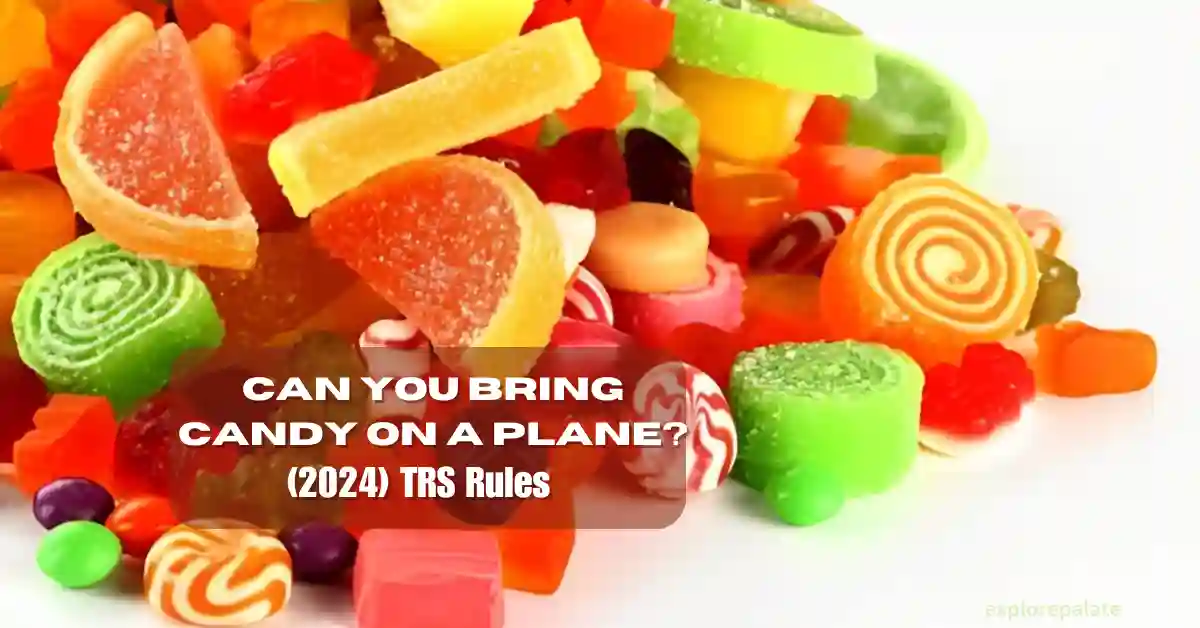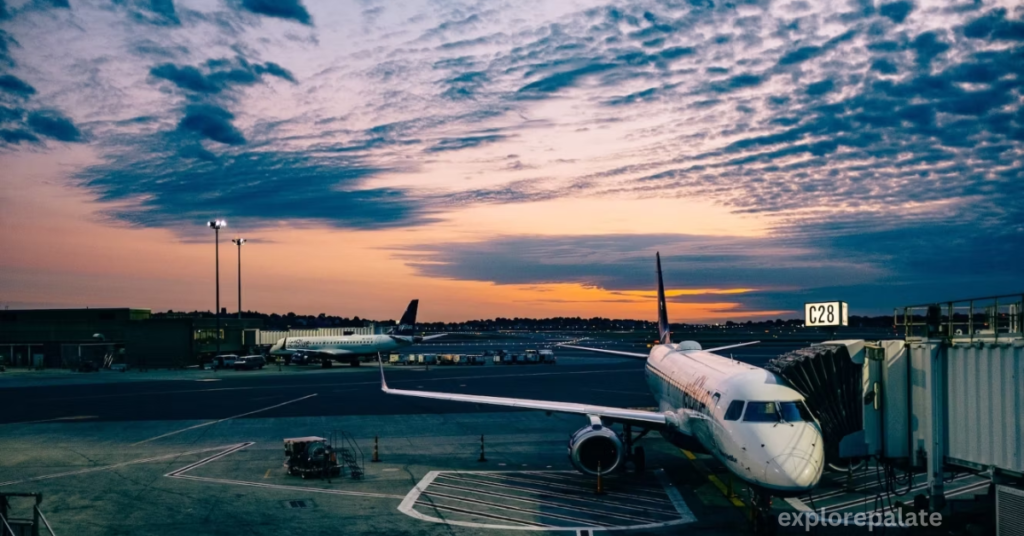As a frequent flier and self-proclaimed candy lover, I’ve had my fair share of run-ins with TSA agents at security screenings. Picture this: you’ve just visited the most charming candy store, your carry-on filled with chocolate bars, gummy bears, and that special kind of hard candy you can’t find anywhere else. Now, you’re standing in line, silently praying your sweet treats won’t be the day’s violation. Trust me, watching a deaf man’s stolen candy is a horror story no one should experience.
TSA rules and figuring out what candy is allowed on a plane is about critical thinking. Let’s dismantle some myths: bulk candy is not seen as a potential weapon, nor do TSA agents believe your lolly has secret detonation materials. However, they limit quantities based on volumes, and security screenings are not as devoid of common sense as some tales suggest. A candy-by-color sweets enthusiast? Sure, pack them! But remember, the My TSA app is there for a reason – to ensure your travel experience doesn’t include TSA agents confiscating your travel candy.
Choosing the right type of candy is crucial; think about candy store purchases, not gel or liquid definitions that could cause contempt among TSA agents, leading to a wasted travel candy scenario. So remember, while TSA’s rights are not to rudely impose restrictions, travelers are expected to use their discretion and respect the guidelines. After all, nobody wants to be the cause of a hold-up over a misunderstood TSA rule.
Are You Allowed To Bring Candy On A Plane
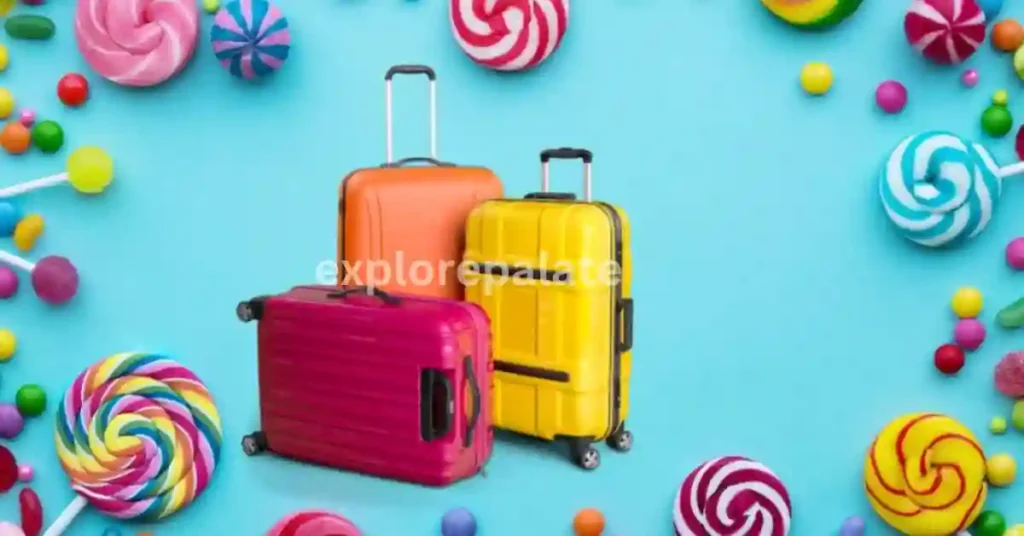
Traveling by plane in 2024? You’ll be pleased to know that the TSA permits most types of candy in your carry-on. Solid sweets like chocolate bars and gummies breeze through security. However, liquid candy tubes, gel candy, or any candy in liquid form must comply with the 3-1-1 rule. This means they cannot exceed 3.4 ounces or 100 milliliters and must fit comfortably within a single, quart-sized bag, with one bag allowed per person. As a frequent flyer with a sweet tooth, I’ve mastered the packing of my favorite mid-flight treats, avoiding sticky situations at security checks.
TSA Candy Rules Quick Facts

- TSA regulations allow for solid food items to be packed in both carry-on luggage and checked bags.
- Candy, being a solid food item, is generally permitted on a plane.
- Liquid or gel food items must adhere to the 3.4 ounces rule in carry-on baggage.
- Items exceeding the liquid or gel restrictions should be placed in checked baggage.
- Always verify the latest TSA food rules before traveling to ensure smooth passage through airport security.
- Be prepared for TSA agents to inspect any questionable items during the security check.
- Plan ahead to avoid being stopped and potentially having your food items confiscated.
Can you bring candy in your carry-on or checked baggage?
When traveling by air, it’s important to consider TSA regulations regarding solid food items, such as candy, which are allowed in both carry-on luggage and checked bags.
However, liquid or gel food items are subject to the 3.4 ounces rule for carry-on baggage; exceeding this limit requires placement in checked baggage. It’s essential to verify TSA food rules prior to departure to ensure airport security clearance without delays or confiscation of items by TSA agents.
What is the 311 rule?

In the context of airplane travel, savvy passengers are often mindful of the TSA regulations enforced to ensure safety during transportation. Among these is the well-known 3-1-1 rule, a guideline dictating the allowable quantities of liquids, gels, and aerosols in carry-on bags.
According to this rule, each passenger is permitted containers no larger than 3.4 ounces (100 milliliters) of such substances, all of which must fit snugly into a single quart-sized, clear plastic bag. This sealed bag then needs to be visible to TSA agents during the airport security screening process, facilitating a smooth inspection.
From personal experience, I’ve found that having my quart-sized bag at the ready streamlines security checks, leaving more time to ponder sweeter concerns like whether my stash of confectionery treats will pass muster. Happily, typical carry-on candy evades the 3-1-1 rule altogether, as it doesn’t fall under the liquid, gel, or aerosol categories, thus making it a worry-free travel snack.
What is considered gel food or candy?
In 2024, the TRS guidelines have become quite specific when distinguishing gel food from candy. Traditional candy, ranging from your favorite chocolate bars to sweet hard lozenges, is not tossed into the gel category. However, if you can pour, pump, spread, or spill it, then it’s likely classified under gel or liquid. This includes your creamy peanut butter confections or the soft, gel-filled chocolates that could potentially ooze out. Remember, when packing for your flight, any doubt regarding gel-like candy should be cleared with the TSA to avoid any pre-boarding hiccups.
What is a gel candy, and what is not?
TSA checkpoints with candy can feel like a tricky quiz on semantically related topics—what classifies as a gel candy and what does not. My personal mishap involved attempting to take Chocolate Truffles with a ganache center onto a plane, only to learn that anything gelatinous or liquid lollipop-like, such as Too Tart Super Sweet Spray or Squeeze Pop, is subject to the TSA’s 3.4-ounce limit.
The definition of these items can be ambiguous, leading to unexpected checkpoint disagreements. Even seemingly harmless Baby Lucas Candy might be scrutinized if it resembles a powder substance or gooey goodness that requires additional checks. So, before you waltz through security, make sure to figure out if your sweet treats fall under the TSA’s definition of hazardous using the agency’s app or a quick online video for guidance.
Surrender that cupcake
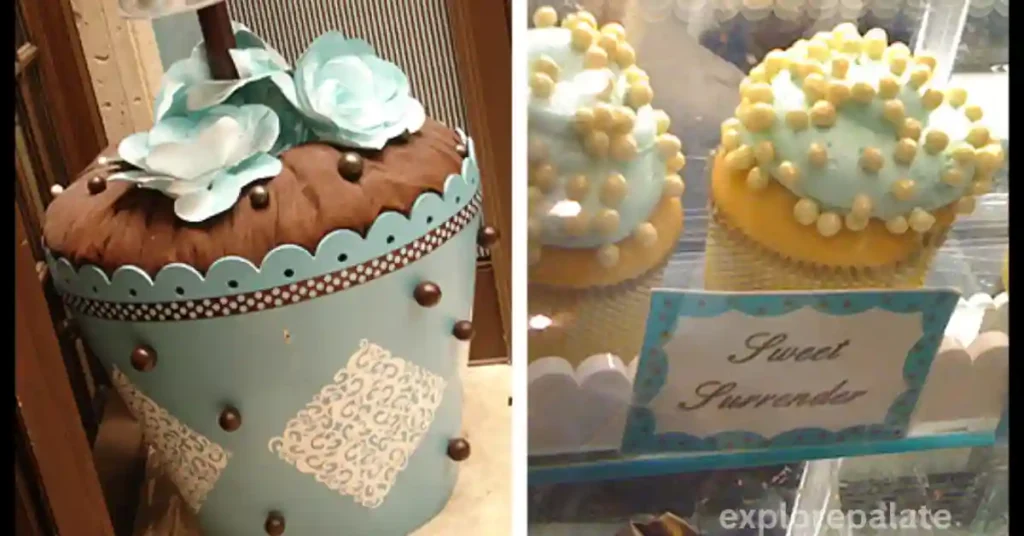
At the McCarran Airport in Las Vegas, I found myself in a peculiar predicament at the TSA checkpoint. It all started when the TSA agents regarded my standard cupcake as if it were a covert gel-like substance, despite it being just an innocent dessert with a frosting-to-bread ratio that surely couldn’t constitute a threat.
I recalled the 2011 Rebecca Hains case, where a cupcake in a jar sparked a tremendously puzzling debate over the TSA’s definition of gels and liquids. Their liberal term usage means that even my harmless treat, which had no more than the 3.4 ounces limit of frosting, was deemed questionable, echoing the disbelief of many a passenger murmuring, “Doesn’t seem right.” Amid the stale air of the security line, I stood dumbfounded, feeling every bit like I was involved in a Las Vegas gamble, albeit a rather sugary one.
The second paragraph delves into the surreal resolution of this edible conundrum, juxtaposing the traveler’s frustration with the rigidity of TSA protocols. The narrative continues to unfold as the TSA tale reaches a head, challenging common sense and raising more questions about airport security measures.
Do they make chemical weapons with candy?
During a routine security check at the airport, TSA agents raised eyebrows at my candy—specifically, the gel candy in my carry-on. Although seemingly inconsequential, these treats, ranging from Chocolate Truffles with ganache centers to liquid lollipop variants like Too Tart Super Sweet Spray and Squeeze Pop, fell victim to the notorious 3.4-ounce rule.
As a traveler, it’s crucial to understand the TSA’s ambiguous definition of what constitutes a gel or liquid—terms that lead to hasty and often heated checkpoint disagreements. Even Baby Lucas Candy, a harmless powder substance or anything resembling gooey goodness, could warrant further inspection, turning a simple waltz through security into an inconvenient ordeal as you figure out whether your sweet stash meets the TSA’s stringent criteria for hazardous materials, often requiring one to peruse their app or refer to an online video for assistance.
Can you bring candy on a plane?
At TSA checkpoints, the definition of gel candy and liquid restrictions, exemplified by the 3.4-ounce limit, can create ambiguous situations leading to checkpoint disagreements. Travelers may find their Chocolate Truffles with ganache centers, Too Tart Super Sweet Spray, Squeeze Pop, or even Baby Lucas Candy scrutinized under regulations that consider gelatinous textures and powder substances as hazardous.
It’s a puzzling scenario for many who must figure out, often by consulting the TSA app or a video, how to waltz through security without parting with their gooey goodness.
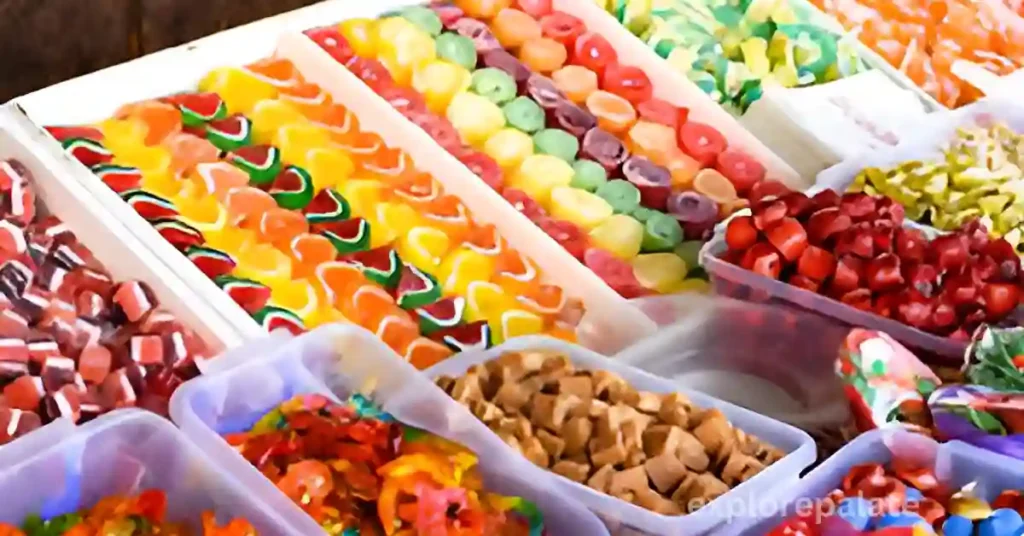
1. Gummy Candies
When traveling by air, passengers often wonder if their favorite gummy candies, like gummy bears, gummy worms, and jelly beans, can accompany them. My countless flights across the USA have taught me that you can indeed stow these treats in both your carry-on bags and checked baggage. However, consider keeping gummy candy in its original packaging to avoid questions about open containers. Although commercial flights don’t limit the quantities of gummies you can take, packing the desired amount is advisable.
2. Chocolate
Speaking of a sweet journey, chocolate is another treat flyers often pack. Whether tucked in your carry-on or checked luggage, these cocoa delights are travel-friendly. But, stay aware of the TSA’s liquids rule if your chocolate is in a liquid or gel-like substance state; any container over 3.4 ounces may be a no-go.
3. Hard Candy
Now, if you have a penchant for hard candy, the skies are quite friendly for these sweets. Whether it’s peppermints or lemon drops, feel free to pack them in your plane essentials, available in both carry-on and checked luggage.
4. Lollipops
Similarly, lollipops are fuss-free; just pop them into your luggage, and you’re ready to board the plane with your carry-on treasures.
5. Bars Candy
Next up, candy bars are yet another delight that effortlessly passes airplane protocols. So, stash them in your bags, be it carry-on or checked luggage.
6. Corn Candy
For those with a fondness for candy corn, it’s all clear skies. Whether it’s Halloween or not, your plane trip can include this festive treat in your carry-on or checked luggage.
7. Gel Candy
But let’s not forget gel candy lovers. Items like fruit snacks and squeezable candy tubes fall under a specific category. Due to their gel-like substance, they must comply with the TSA’s 3-1-1 rule. A quart-sized zip-top bag is suggested for these sweet treats when in carry-on luggage, ensuring each container of gel candy doesn’t exceed three ounces. Check your checked luggage if you’re carrying more substantial quantities.
8. Liquid Candy & Sweets
When it comes to Liquid Candy & Sweets, like syrups or liquid chocolate, though tempting to consume mid-flight, they are bound by the TSA’s 3-1-1 liquids rule. For a hassle-free checkpoint experience, keep your liquid candies below 3.4 ounces or 100 milliliters and in a single quart-size bag. If you’re planning on bringing more, it’s recommended to pack them in your checked luggage to avoid violating any rules at TSA security checkpoints.
9. Solid Candy
Diving into solid candy, one must remember to bring only drug-free treats. Solid chocolates, candy bars, and suckers are a yes, keeping in mind to opt for nut-free options if flying with passengers who have severe nut allergies. Remember to keep sweets like chocolate or candy canes in either their original bag or a resealable bag, especially when traveling internationally, as some destination countries like Australia have strict regulations on food items.

10. THC Candy
Lastly, a precautionary note on THC Candy. Despite its increasing normalization, carrying THC gummies onto planes could violate federal law in the USA. Even in states where people have traveled comfortably with THC products when confronting TSA agents at checkpoints, THC candies could be confiscated. Remember, the risk of these items being seized is higher, and what might be legal in one state can lead to legal woes at borders or in foreign countries with stricter laws on such drugs. Always double-check the ramifications for both domestic flights and international flights.
11. Candy with Nuts
Carrying candy with nuts in your carry-on or checked luggage is usually permitted when flying. The crunch and satisfaction of a nutty treat at 30,000 feet can be comforting. Make sure your candy with nuts is securely stowed in your bag to avoid any issues during your journey.
12. Candy with Fruit
When it comes to candy with fruit, it’s a sweet yes from me. You can bring such snacks on a plane, either in your carry-on or checked luggage. The burst of fruity flavor can brighten up a long flight. Always check, as regulations can change.
13. Candy with Alcohol
Candy containing alcohol can fly with you if the alcohol content is below 0.5% by volume. Such treats must be carried in carry-on or checked luggage and may need to be declared. Remember: TSA is strict, so clarity with these sweets is crucial.
14. Candy with CBD
It is a no-go for candy with CBD if it contains THC – that’s a clear rule on the plane. Even if it’s the plain CBD variety, it’s wise to check beforehand as not every airport or airline has the same stance.
15. Candy with THC
Legislation regarding candy with THC is evolving, but don’t bring it on a plane unless sure it’s legal at both your departing and arriving locations. Stay informed to avoid a high-flying mishap.
16. Homemade Candy
Homemade candy can be a delightful treat to have in your carry-on or checked luggage while on a plane. The personal touch of a home recipe adds warmth to your travel experience.
17. Wrapped Candy
Whether it’s wrapped candy or a chocolate bar, both are welcome in carry-on luggage or checked luggage when on a plane. This type of candy is usually trouble-free during security checks.
18. Unwrapped Candy
Unwrapped candy is a bit trickier. You can still bring it on a plane, but it’s recommended to pack it in a resealable bag or container in your carry-on or checked luggage. It helps keep everything tidy and accessible.
19. Purse/Backpack
Stashing unwrapped candy in your purse or backpack? The same rules apply. Bring it on the plane but remember it’s recommended to pack it in a resealable bag or container for convenience.
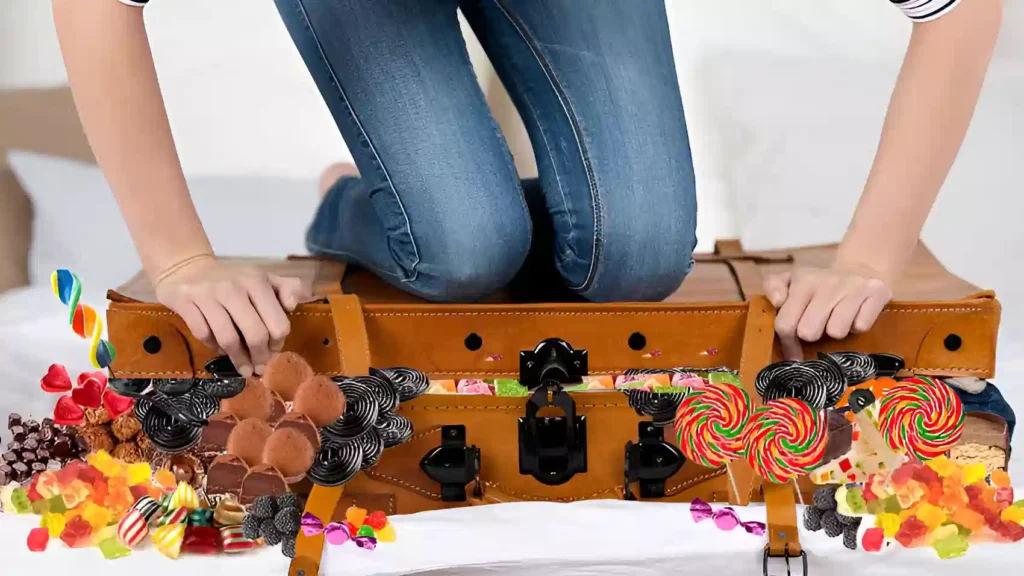
Can I bring a lot of candy on a plane?
Sure, but remember the TSA may have rules concerning weight and size restrictions, especially if your sweet stash seems to mimic a liquid or gel-like substance. Bulk candy could raise eyebrows, so check the TSA’s website for the most up-to-date rules and regulations on such items.
Conclusion
In conclusion, traversing the skies with a sweet tooth is largely a smooth journey, but knowledge is your best travel companion. As a candy connoisseur and veteran traveler, I’ve learned that while the TSA allows for a variety of confections in your carry-on, like gummy bears and chocolate bars, it pays to be mindful of the rules surrounding gel and liquid sweets.
Adhering to the TSA’s 3-1-1 rule for items such as liquid chocolate or gel-filled treats will ensure hassle-free passage through security. As regulations and definitions can vary and evolve over time, it is always prudent to do a pre-travel check: consult the My TSA app or TSA website for the most current information.
Armed with this knowledge, you can confidently pack your sugary delights, whether for comfort or to savor a piece of a distant destination, turning every trip into an enjoyable escapade free of candy confiscation woes.
You Might Also Like
FAQs
What candy is not allowed on a plane?
Solid food items (not liquids or gels) can be transported in either your carry-on or checked bags. Liquid or gel food items larger than 3.4 oz are not allowed in carry-on bags and should be placed in your checked bags if possible.
Can I bring sweets through airport security?
Yes, you can take food through airport security. Sandwiches, fruit, sweets, and most other solid foods can be placed in your hand luggage. However, this doesn’t apply to foods with a high liquid content if they are in a container larger than 100ml.
What snacks are not allowed on a plane?
1. Alcoholic beverage
2 . Bottled water
3 . Canned goods
4 . Oil, vinegar, honey, and syrups
5. Fresh meats
6. Fresh produce
7 . Dips, spreads, and sauces
8 . Cupcakes in a jar
What can you carry on a plane in 2023?
You are allowed to bring a quart-sized bag of liquids, aerosols, gels, creams, and pastes in your carry-on bag and through the checkpoint. These are limited to travel-sized containers that are 3.4 ounces (100 milliliters) or less per item.
Do airports check candy?
You can bring as much candy as you want on a plane as long as it is solid and fits within the weight restrictions for your checked bags or the size restrictions for your carry-on baggage. Liquid or gel candy remains subject to the TSA’s 3-1-1 rule.
Can I bring candy through customs?
Can You Bring Candy Through Customs In The United States? According to U.S. Customs and Borders Protection, candy is generally admissible, but all food items must be declared. Failure to do so can result in up to $10,000 in fines and penalties.

